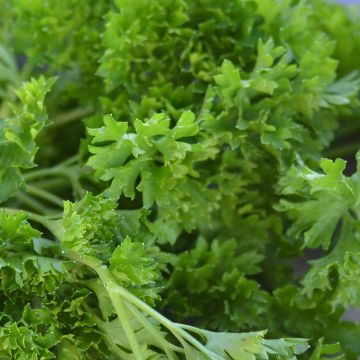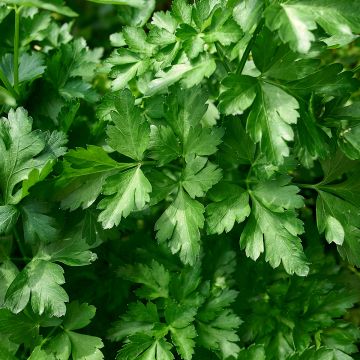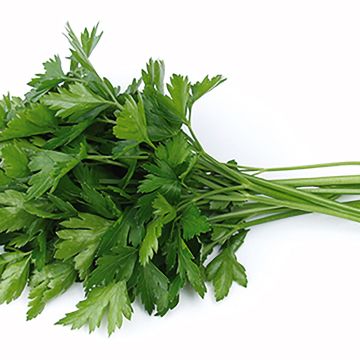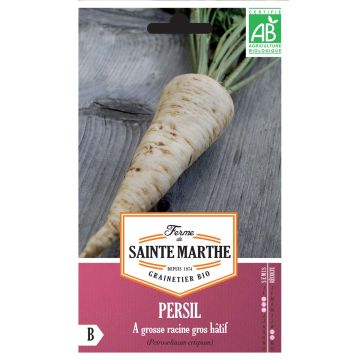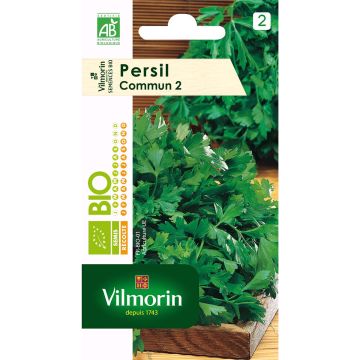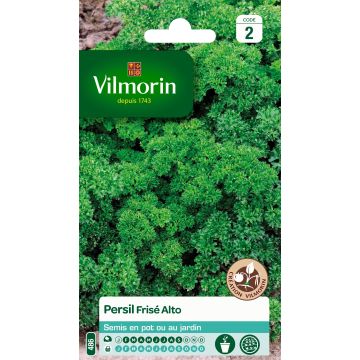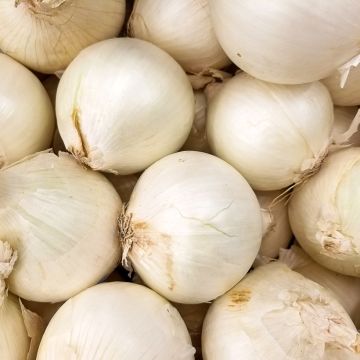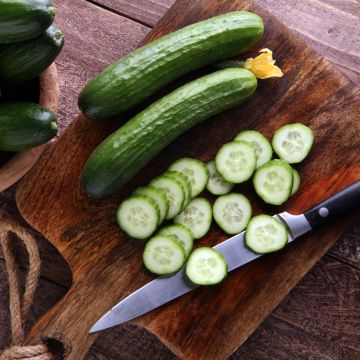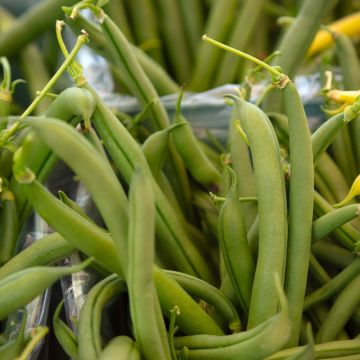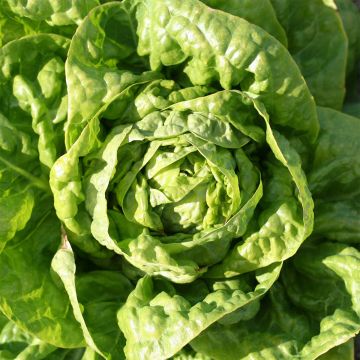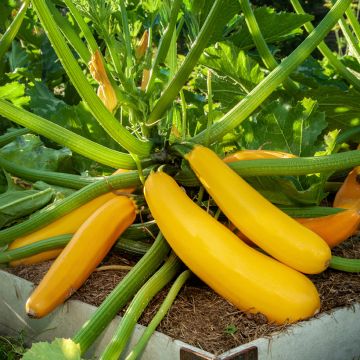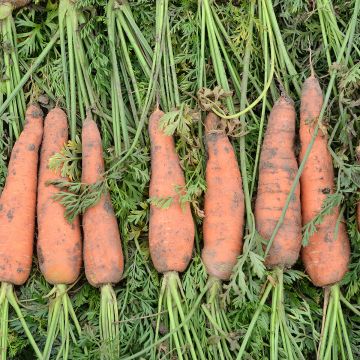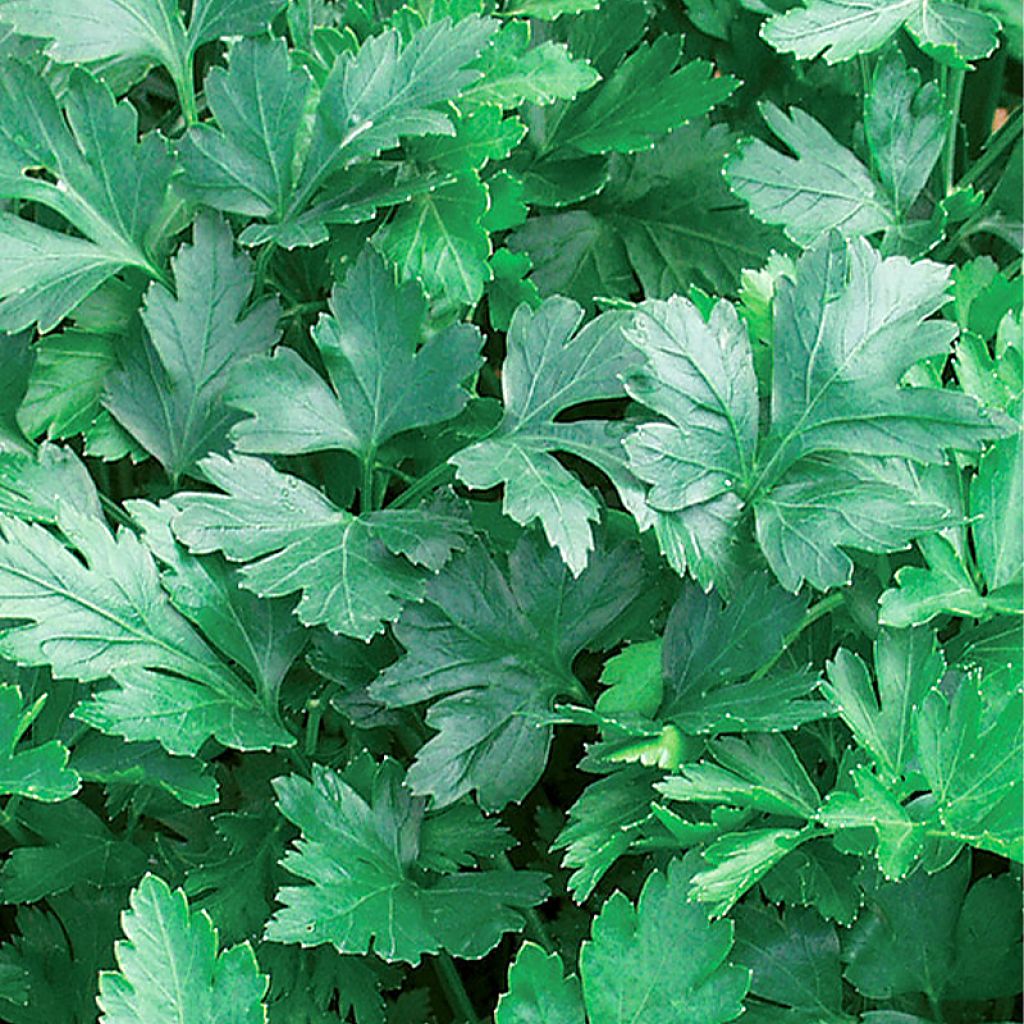

Persil plat Laica - Graines Bio
Petroselinum crispum 'Laica'
Petroselinum crispum Laica
Parsley, Garden Parsley
Special offer!
Receive a €20 voucher for any order over €90 (excluding delivery costs, credit notes, and plastic-free options)!
1- Add your favorite plants to your cart.
2- Once you have reached €90, confirm your order (you can even choose the delivery date!).
3- As soon as your order is shipped, you will receive an email containing your voucher code, valid for 3 months (90 days).
Your voucher is unique and can only be used once, for any order with a minimum value of €20, excluding delivery costs.
Can be combined with other current offers, non-divisible and non-refundable.
Home or relay delivery (depending on size and destination)
Schedule delivery date,
and select date in basket
This plant carries a 6 months recovery warranty
More information
We guarantee the quality of our plants for a full growing cycle, and will replace at our expense any plant that fails to recover under normal climatic and planting conditions.
Description
The Organic Parsley 'Laica' is a variety of flat-leaf parsley with large dark green leaves that has the advantage of growing quickly and evenly, even after multiple cuts. Combine it with garlic and olive oil and you get the famous persillade capable of invigorating any vegetable dish. Always have a pot of parsley on hand for your culinary needs. The Organic Parsley 'Laica' can be sown from February to July and harvested from May to October.
Parsley is an aromatic herb, used as a condiment and also as a medicinal plant. It is rich in vitamins, trace elements, and minerals. Its high content of vitamins C and A is especially noteworthy: 100g of parsley contains four times more vitamin C than 100g of an orange and four times the daily required dose of vitamin A. It is a stimulant for the nervous system, effectively fights anemia, and has detoxifying properties.
It is not surprising that parsley symbolized strength in ancient Greece and was adored by the Romans, who introduced it to many countries in the Empire. It fell out of favour in the Middle Ages when it became associated with the devil. This biennial plant native to the Near East is cultivated as an annual, unless one wishes to let it go to seed and harvest the seeds. It then produces umbels of tiny yellowish-green to white flowers. But it is the leaves that parsley is cultivated for. They contain essential oils and release a fragrant aroma when crushed. The leaves are green, divided into three leaflets, and deeply lobed. Parsley can sometimes be mistaken for small hemlock, a toxic plant, whose leaves are similar but emit a nauseating odour. Tuberous parsley is cultivated for both its taproot and foliage. The parsley plants can reach a height of 60cm (24in).
Parsley is often included in bouquet garni along with thyme, bay leaf, and rosemary. It is highly appreciated in persillades that accompany green beans, snails, etc. It is also frequently used as a decorative element on dishes: don't hesitate to eat it, as it freshens the breath and cleanses the mouth!
Harvesting: The harvest usually takes place three months after sowing. It can be done directly with scissors or by pinching off as needed in the kitchen. This cutting stimulates the plant and promotes the formation of new shoots. It is useful to have your herbs at hand, in a pot on the windowsill or nearby in the garden, so you don't have to trek across the entire vegetable patch every time you need them.
Preservation: Parsley is best consumed fresh, but it freezes very well. To do this, wash and let it dry thoroughly. Gather the branches into bundles and place them in a freezer bag. This way, you can keep it all winter and use it as needed. If you prefer to let it dry, wash the branches, pat them dry carefully, and then let the bunches dry heads down in a dry place. When the branches become crumbly, crumble them and transfer to an airtight container.
Gardener's tip: Parsley is said to enhance the fragrance of roses. To deter carrot flies, which also love parsley, plant them at the base of your lavender plants to drive them away. Radishes and parsley have a synergistic effect, while parsley inhibits the growth of celeriac.
Report an error about the product description
Harvest
Plant habit
Foliage
Botanical data
Petroselinum
crispum
Laica
Apiaceae
Parsley, Garden Parsley
Cultivar or hybrid
Biennial
Other Parsley
View all →Planting and care
Preparing the sowing: before sowing parsley, it is necessary to prepare the soil by loosening it to a depth of a few centimetres and carefully weeding it. Parsley needs a lot of moisture to grow: the soil will be generously watered or the seeds will be soaked in water for 24 hours before sowing. It adapts to all types of soil but prefers those rich in humus and light.
Sowing in open ground: parsley seeds can be sown directly in open ground from April to September. Whether sown in furrows or broadcast, or in a container, the seeds need a lot of moisture to germinate. They will be sown thinly in soil saturated with water and covered with half a centimetre of special sowing compost that will be firmly pressed down. They will then be watered again, and to maintain constant moisture, the sowing can be covered with a fabric that will be watered. Germination can take a long time, up to a month.
Repotting: it often happens that we need a ready-to-use pot of parsley on hand. When your parsley plants are strong enough, take one or two from your sowing in the garden. Place some gravel at the bottom of a pot to facilitate drainage. Loosen the roots if necessary, then adjust the root ball in its new container, filling it with moistened compost. Place your parsley in the sun or partial shade.
Seedlings
Care
Intended location
This item has not been reviewed yet - be the first to leave a review about it.
Similar products
Haven't found what you were looking for?
Hardiness is the lowest winter temperature a plant can endure without suffering serious damage or even dying. However, hardiness is affected by location (a sheltered area, such as a patio), protection (winter cover) and soil type (hardiness is improved by well-drained soil).

Photo Sharing Terms & Conditions
In order to encourage gardeners to interact and share their experiences, Promesse de fleurs offers various media enabling content to be uploaded onto its Site - in particular via the ‘Photo sharing’ module.
The User agrees to refrain from:
- Posting any content that is illegal, prejudicial, insulting, racist, inciteful to hatred, revisionist, contrary to public decency, that infringes on privacy or on the privacy rights of third parties, in particular the publicity rights of persons and goods, intellectual property rights, or the right to privacy.
- Submitting content on behalf of a third party;
- Impersonate the identity of a third party and/or publish any personal information about a third party;
In general, the User undertakes to refrain from any unethical behaviour.
All Content (in particular text, comments, files, images, photos, videos, creative works, etc.), which may be subject to property or intellectual property rights, image or other private rights, shall remain the property of the User, subject to the limited rights granted by the terms of the licence granted by Promesse de fleurs as stated below. Users are at liberty to publish or not to publish such Content on the Site, notably via the ‘Photo Sharing’ facility, and accept that this Content shall be made public and freely accessible, notably on the Internet.
Users further acknowledge, undertake to have ,and guarantee that they hold all necessary rights and permissions to publish such material on the Site, in particular with regard to the legislation in force pertaining to any privacy, property, intellectual property, image, or contractual rights, or rights of any other nature. By publishing such Content on the Site, Users acknowledge accepting full liability as publishers of the Content within the meaning of the law, and grant Promesse de fleurs, free of charge, an inclusive, worldwide licence for the said Content for the entire duration of its publication, including all reproduction, representation, up/downloading, displaying, performing, transmission, and storage rights.
Users also grant permission for their name to be linked to the Content and accept that this link may not always be made available.
By engaging in posting material, Users consent to their Content becoming automatically accessible on the Internet, in particular on other sites and/or blogs and/or web pages of the Promesse de fleurs site, including in particular social pages and the Promesse de fleurs catalogue.
Users may secure the removal of entrusted content free of charge by issuing a simple request via our contact form.
The flowering period indicated on our website applies to countries and regions located in USDA zone 8 (France, the United Kingdom, Ireland, the Netherlands, etc.)
It will vary according to where you live:
- In zones 9 to 10 (Italy, Spain, Greece, etc.), flowering will occur about 2 to 4 weeks earlier.
- In zones 6 to 7 (Germany, Poland, Slovenia, and lower mountainous regions), flowering will be delayed by 2 to 3 weeks.
- In zone 5 (Central Europe, Scandinavia), blooming will be delayed by 3 to 5 weeks.
In temperate climates, pruning of spring-flowering shrubs (forsythia, spireas, etc.) should be done just after flowering.
Pruning of summer-flowering shrubs (Indian Lilac, Perovskia, etc.) can be done in winter or spring.
In cold regions as well as with frost-sensitive plants, avoid pruning too early when severe frosts may still occur.
The planting period indicated on our website applies to countries and regions located in USDA zone 8 (France, United Kingdom, Ireland, Netherlands).
It will vary according to where you live:
- In Mediterranean zones (Marseille, Madrid, Milan, etc.), autumn and winter are the best planting periods.
- In continental zones (Strasbourg, Munich, Vienna, etc.), delay planting by 2 to 3 weeks in spring and bring it forward by 2 to 4 weeks in autumn.
- In mountainous regions (the Alps, Pyrenees, Carpathians, etc.), it is best to plant in late spring (May-June) or late summer (August-September).
The harvesting period indicated on our website applies to countries and regions in USDA zone 8 (France, England, Ireland, the Netherlands).
In colder areas (Scandinavia, Poland, Austria...) fruit and vegetable harvests are likely to be delayed by 3-4 weeks.
In warmer areas (Italy, Spain, Greece, etc.), harvesting will probably take place earlier, depending on weather conditions.
The sowing periods indicated on our website apply to countries and regions within USDA Zone 8 (France, UK, Ireland, Netherlands).
In colder areas (Scandinavia, Poland, Austria...), delay any outdoor sowing by 3-4 weeks, or sow under glass.
In warmer climes (Italy, Spain, Greece, etc.), bring outdoor sowing forward by a few weeks.






























